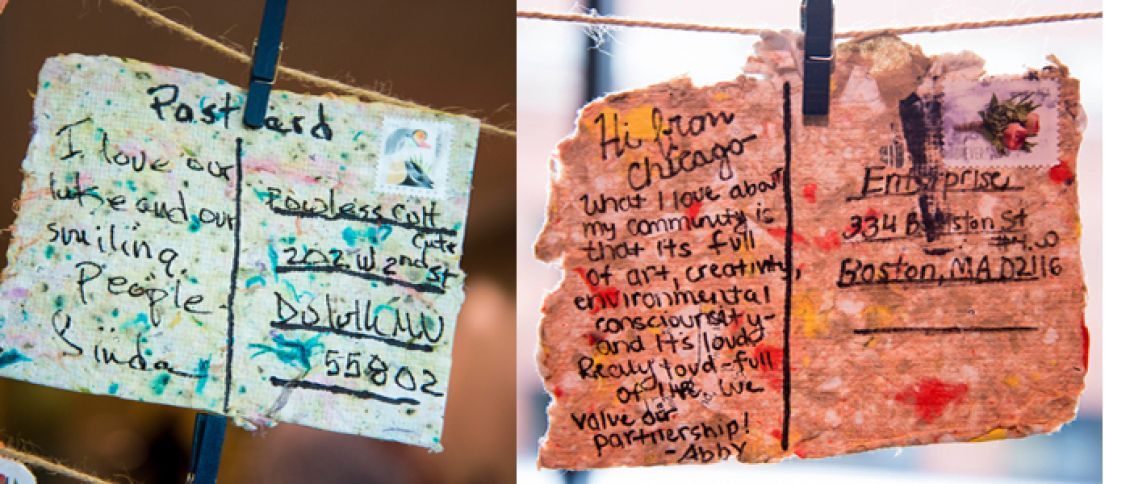Our mission is to make home and community places of pride, power and belonging. Building to Heal: A Framework for Holistic Community Development guides practitioners through the purpose and importance of bringing a healing-centered approach to community development and outlines the principles and strategies to achieve this goal.
Why is a healing-centered approach needed now?
Whether dealing with a natural disaster, pandemic, violence or economic challenges, racism is a root cause of why people of color face disproportionate trauma and adverse outcomes due to these challenges. Faced with this complex yet unmistakable reality, individuals, communities and organizations are all asking, "What is needed?” A clear response from people across the spectrum is that a healing-centered approach is needed.
Based on decades of investment in affordable housing and in the resilience, well-being and upward mobility of low-income communities, we have learned that when community members define resilience, they explain it in terms of the traumas and chronic stresses that require them to be resilient. They share stories of individual, collective and intergenerational trauma. They also talk about the sources of their resilience – the deep reserves of individual, cultural and community strength that they draw upon in challenging times. Evidence and experience show that culture, connection and power are central to healing.
Often in community development, we focus on solving a problem in a community. So, for example, we address racism by striving to be “anti-racist." Our colleague Chandra Christmas-Rouse explains how, in a healing-centered approach, the focus turns tobuilding on a community’s existing values, traditions and cultures. "That conversation is based in abundance instead of scarcity and in assets instead of deficits. It is much more about pro-liberation, pro-joy, pro-healing – all of the practices that allow communities, my community, to be our very best,” she says.
Healing is not only health.
Healing can be applied to relationships – by listening, by building trust. Healing can be applied to money – by investing in community priorities, compensating people’s time, paying reparations. Healing can be applied to community - by celebrating local cultures, understanding context and history, and investing in the leadership of community members. Healing can be applied to policy - by creating renter protections, enforcing fair housing laws, bringing an anti-racist lens to criminal justice reform and advocating for people who are the most vulnerable in post-disaster funding allocations. Healing can be applied to housing development - by using creative and inclusive processes that prioritize resident voices, by creating structures for resident leadership in decision making, and by designing buildings and places that contribute positively to the health and well-being of residents and the neighborhood.
Healing means disrupting de-humanization. Artist, facilitator and cultural innovator Alicia Walters reminds us that “anti-blackness is both the core wound and the organizing principle of this country, a through-line that permeates all of our institutions and cultures. [Therefore] seeing and understanding the world through the Black experience is the basis for our individual and collective healing.” And in order to mitigate historic and ongoing trauma to all parties involved, healing must be applied to every facet of community development – at the scale of the practitioners, organizations, neighborhoods and residents.
What is the healing-centered community development framework?
The framework provides the context for why a healing-centered approach is essential to successful community development and defines core principles and strategies for centering healing. It guides the reader through those core principles and strategies and offers questions and prompts for how the reader can apply these concepts and practices in their own work and life, which ultimately has an impact at the individual, organization, and systems levels.
What housing practitioners will learn.
Practitioners will learn why it is essential to apply a healing-centered approach to the work of community development and how to begin incorporating this approach in their own work.
The Healing-Centered Community Development Framework prompts community development practitioners and stakeholders to reflect on the strengths and skills they already have and to identify their gaps in knowledge, understanding, and modes of practice. Building to Heal: A Framework for Holistic Community Development outlines guiding principles, strategies and practices that will enable practitioners to apply a healing-centered lens to their work, with the goal of meeting the needs and priorities of residents and communities most effectively.
Use the Framework
Building to Heal: A Framework for Holistic Community Development is available in the Enterprise Resource Center.
Additional materials as well as opportunities for learning and application of the Healing-Centered Community Development Framework will be offered in 2021. Subscribe to our Design Matters newsletter to be notified of these offerings.
For more information, contact us! If you want to be in touch about using the framework in your work, partnering, or learning more, we welcome you to reach out. Contact Nella Young.
The development of this framework was made possible thanks to the generosity of The Kresge Foundation, with support from the Barr Foundation and the Kendeda Fund. This blog was co-authored by Enterprise's Culture and Creativity team, including Chandra Christmas-Rouse, Brandon Jones, Meghan Venable-Thomas and Nella Young.
